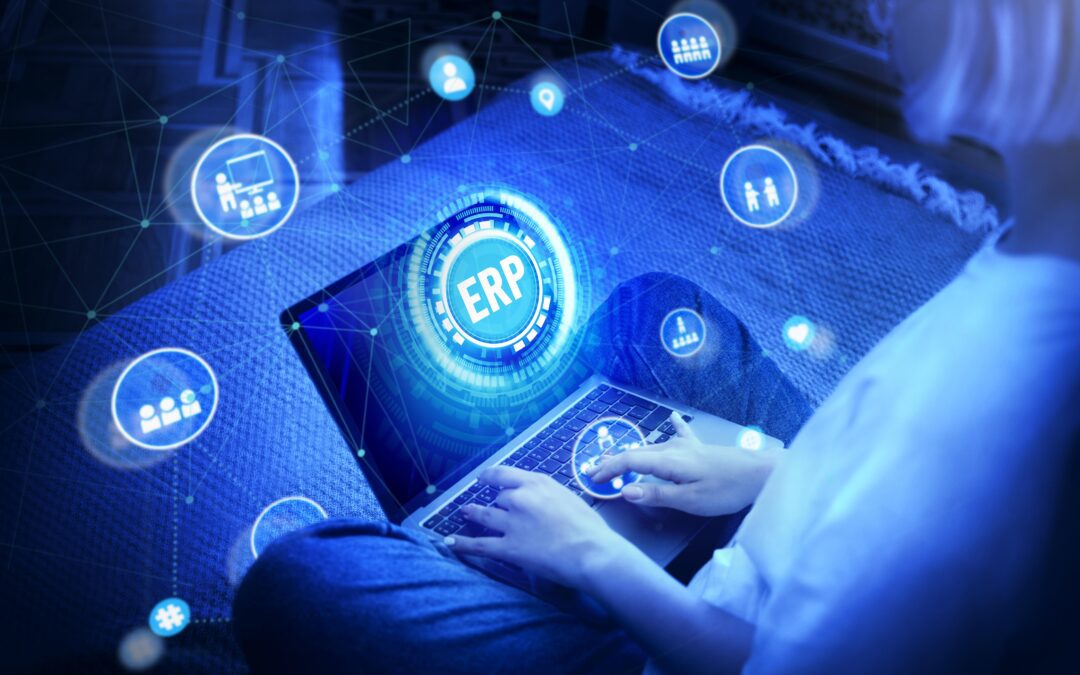In today’s fast-paced business environment, enterprise resource planning (ERP) systems have become the backbone of organizations striving for efficiency, streamlined operations, and data-driven decision-making. One of the key modules in ERP is procurement, which plays a vital role in managing the acquisition of goods and services. But what exactly is procurement in ERP, and why is it such a crucial element for modern businesses?
This article will walk you through the concept of procurement in ERP, its importance, key processes, benefits, and how it can improve your company’s operational efficiency.
What Is Procurement in ERP?
Procurement in ERP refers to the process of acquiring goods, services, or works from an external source, often via a tender or competitive bidding process. When integrated into an ERP system, procurement is a comprehensive module that enables businesses to automate and streamline their purchasing processes, from requisitioning to supplier selection and payment.
ERP procurement allows organizations to track and manage their procurement cycles efficiently, ensuring timely delivery, cost control, and quality. This centralized system eliminates the need for disparate systems, offering real-time insights into inventory, supplier performance, and spending patterns.
Key Components of Procurement in ERP Systems
To understand how procurement functions within an ERP system, it’s essential to break it down into its core components:
1. Supplier Management
Supplier management involves the identification, selection, and maintenance of relationships with suppliers. ERP systems help streamline this process by storing supplier data, including contact information, performance metrics, and compliance information. This leads to better decision-making when selecting suppliers.
2. Purchase Requisition and Order Management
Purchase requisitions are formal requests to buy goods or services within an organization. In ERP systems, employees can initiate purchase requisitions directly, which are then reviewed and approved based on pre-set rules. Once approved, these requisitions turn into purchase orders that are sent to the chosen supplier for fulfillment.
3. Contract Management
Contract management in ERP systems ensures that agreements with suppliers are properly documented and monitored. By tracking contract expiration dates, terms, and conditions, ERP systems help businesses ensure compliance and manage supplier relationships more effectively.
4. Inventory Management
Procurement is closely tied to inventory management. ERP systems provide real-time tracking of stock levels, ensuring that businesses don’t overstock or run out of essential supplies. Procurement teams can also set automatic reordering thresholds to maintain optimal stock levels.
5. Invoice and Payment Management
Once the goods or services have been delivered, invoice management kicks in. ERP systems match invoices with purchase orders and delivery receipts, ensuring that businesses only pay for what they ordered. This automated process reduces errors, fraud, and delays in payments.
6. Reporting and Analytics
A strong feature of ERP procurement is its reporting and analytics capabilities. By consolidating data from various procurement activities, ERP systems generate insights into supplier performance, spending patterns, and purchasing trends. This allows organizations to make informed decisions and improve future procurement strategies.
Why Is Procurement Important in ERP Systems?
Procurement is essential to any organization as it directly impacts the efficiency, cost, and quality of the products and services a business delivers. Here’s why procurement is especially crucial when integrated into ERP systems:
1. Streamlining Processes
Procurement in ERP helps streamline the entire purchasing process. From requisitioning to receiving goods, each step is automated, reducing the time and effort required for manual data entry and approval workflows. This leads to faster procurement cycles and a reduction in operational bottlenecks.
2. Cost Control
An ERP system enables businesses to track procurement spend and set budget limits. With automated workflows, procurement teams can monitor expenditures in real-time, avoid overspending, and ensure that purchases remain within budget constraints. Moreover, through integrated supplier management, organizations can negotiate better prices and terms, further driving cost savings.
3. Improved Supplier Relationships
Maintaining strong supplier relationships is crucial for any business. With an ERP system, businesses can keep detailed records of supplier performance, communication history, and contract terms. This helps ensure that suppliers meet expectations in terms of quality, delivery times, and service levels.
4. Enhanced Compliance and Risk Management
With ERP procurement, businesses can enforce compliance by adhering to set policies and regulations. The system provides audit trails for every transaction, helping businesses stay compliant with internal and external rules, including industry standards and legal requirements.
5. Real-Time Data and Visibility
An ERP system centralizes procurement data in real-time, providing insights into purchase history, spending trends, and supplier performance. This allows decision-makers to have visibility into procurement activities across departments, ensuring data transparency and more accurate forecasting.
The Procurement Process in ERP Systems
The procurement process in ERP can be broken down into several stages. Let’s take a closer look at each of them:
1. Request for Purchase (RFP)
This is the initial step in procurement where the business identifies a need for goods or services. An RFP is issued to suppliers to gather bids or proposals. The ERP system helps store and organize the responses, making it easier to evaluate suppliers.
2. Supplier Selection
Based on the responses to the RFP, the business evaluates suppliers on various parameters such as cost, quality, and delivery timelines. ERP systems can automatically generate reports to assist in supplier evaluation, ensuring that the best options are selected.
3. Purchase Order Creation
Once the supplier is selected, a purchase order (PO) is created. This order is sent to the supplier for confirmation and fulfillment. In an ERP system, the PO is automatically linked to the initial request, ensuring accurate tracking and compliance.
4. Goods Receipt and Inspection
After the supplier delivers the goods or services, they are inspected to ensure they meet the required quality standards. ERP systems track the status of the delivery, and any discrepancies can be flagged for further action.
5. Invoice Processing and Payment
Once the goods are received and accepted, the supplier submits an invoice. The ERP system matches the invoice with the purchase order and goods receipt, ensuring everything is accurate before processing the payment. This automated process reduces errors and accelerates the payment cycle.
6. Supplier Performance Review
Once the purchase is completed, the ERP system allows the procurement team to review the supplier’s performance. This data is critical for making future procurement decisions and maintaining strong supplier relationships.
Benefits of Using ERP for Procurement
Implementing an ERP system for procurement offers a host of benefits, including:
1. Reduced Procurement Cycle Time
By automating processes such as purchase requisition, order creation, and invoice processing, ERP reduces the overall procurement cycle time. This means faster delivery of goods and services, improving operational efficiency.
2. Better Data Accuracy
Manual data entry is prone to human error, which can lead to costly mistakes in procurement. With ERP systems, all procurement data is centralized, and processes are automated, reducing the chances of errors and ensuring that decisions are based on accurate data.
3. Enhanced Transparency
ERP systems provide complete visibility into the procurement process. Whether it’s tracking the status of a purchase order or reviewing supplier performance, procurement teams have access to real-time information, fostering transparency across the organization.
4. Increased Supplier Collaboration
ERP systems facilitate better communication between businesses and suppliers. With integrated messaging systems and shared documentation, businesses can collaborate more effectively with suppliers, resulting in stronger relationships and improved service.
5. Compliance and Audit Trail
ERP systems provide a built-in audit trail for every procurement transaction. This helps businesses stay compliant with industry regulations and internal policies. In case of any discrepancies, the audit trail provides a detailed history of the transaction for review.
Challenges of Procurement in ERP Systems
While ERP systems provide significant benefits for procurement, they come with their own set of challenges:
1. High Initial Investment
ERP systems can be expensive to implement, especially for small to medium-sized businesses. The costs of software licenses, implementation, and training can be a barrier to entry for some organizations.
2. Complexity of Integration
Integrating an ERP system with existing software and processes can be complex. Organizations may face challenges in aligning their procurement workflows with the capabilities of the ERP system, requiring time and resources to ensure proper integration.
3. Change Management
Implementing an ERP system often requires a shift in company culture and processes. Employees must be trained on the new system, which can cause disruption if not managed properly. Proper change management strategies are necessary to ensure smooth adoption.
Conclusion
Procurement in ERP systems is a crucial element that can significantly enhance an organization’s ability to manage purchasing activities efficiently, reduce costs, and improve supplier relationships. By automating processes, providing real-time insights, and ensuring compliance, ERP procurement modules contribute to overall business success.
Despite the challenges of high initial costs and integration complexity, the benefits of ERP in procurement far outweigh the downsides, especially for growing organizations looking to streamline their operations. As businesses continue to evolve, having an effective ERP procurement system will be a key driver of competitive advantage.
By embracing procurement through ERP systems, organizations can improve their purchasing processes, enhance collaboration, and make better, data-driven decisions that lead to long-term growth and success.




